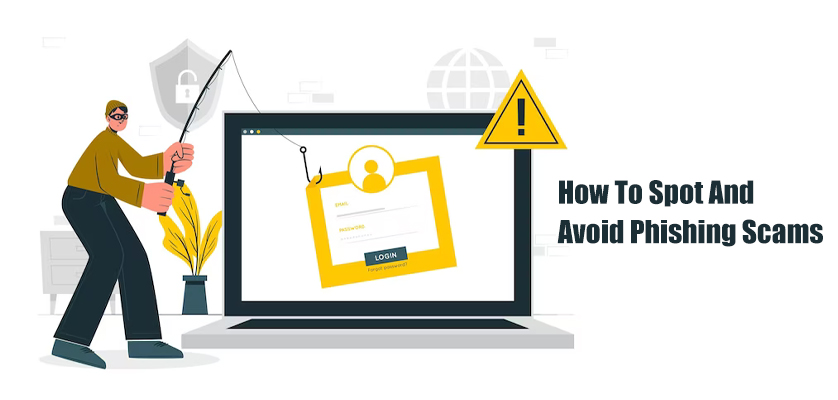Phishing scams are a major threat to online security, but with awareness and caution, you can protect yourself from falling prey to these malicious attacks. In this guide, we’ll cover the signs of a phishing scam, how to avoid them, and best practices for staying safe online.
What Are The 4 Ways To Avoid Phishing?
Phishing scams can be dangerous, but with the right measures in place, you can protect yourself from falling victim to these malicious attacks. Here are four ways to avoid phishing:
1) Verify the source before sharing personal information
2) Keep software and security systems up-to-date
3) Be wary of suspicious emails or links
4) Use strong passwords and two-factor authentication. By following these simple steps, you can stay protected and secure online.
What Is Phishing And How Do You Avoid Phishing?
Phishing is a type of cyber-attack where fraudsters pose as a reliable organisation to steal private data, including login credentials or financial information. To avoid phishing, one should be cautious of emails or links from unknown sources, verify the authenticity of websites before entering personal information, keep software and security systems up-to-date, and use strong passwords and two-factor authentication. By staying informed and vigilant, you can protect yourself from these malicious attacks.
How Do I Stop Phishing?
Stopping phishing requires a combination of technical measures and personal vigilance. To reduce the risk of falling victim to a phishing attack, it’s important to keep software and security systems up-to-date, be cautious of emails or links from unknown sources, verify the authenticity of websites with the help of NordVPN/MrBeast it might possible to encrypt your info before entering personal information, and use strong passwords and two-factor authentication. Additionally, companies can implement anti-phishing technologies, conduct regular security training for employees, and establish a clear security policy.
What Are The Three Most Typical Scams?
Scams come in many forms, but some are more common than others. Here are three of the most common types of scams:
Phishing scams: where fraudsters use phoney emails, websites, or texts to steal personal data, including financial information or login credentials.
Investment scams: where scammers trick people into investing in fake or fraudulent opportunities, such as get-rich-quick schemes or fake cryptocurrency investments.
Imposter scams: where scammers impersonate a trusted entity, such as a government agency or well-known company, to trick people into giving up personal information or paying money.
By staying informed and being cautious of these common scams, you can protect yourself and your finances.
Who Gets Scammed The Most?
Scammers target people of all ages, genders, and backgrounds, but some groups are more vulnerable to scams than others. For example:
Older adults: scammers often target older adults with investment scams, imposter scams, and other types of fraud.
People in financial stress: scammers may target individuals who are in financial distress with scams that promise a quick solution to their problems.
Immigrants: scammers may target immigrants who may be less familiar with local laws and customs, or who may be more vulnerable due to language barriers.
People with disabilities: scammers may take advantage of people with disabilities who may have difficulty recognizing scams or reporting them.
It’s important for everyone to be aware of the potential risks and to take steps to protect themselves from scams.
Where Should I Go If I Get Scammed?
If you have been scammed, it’s important to take action as soon as possible to minimize the damage. You can follow the instructions listed below:
Contact your bank or financial institution immediately to report any unauthorized transactions.
Report the scam to the relevant authorities, such as the Federal Trade Commission (FTC) in the US or the Action Fraud in the UK.
If you have lost money, contact your local police department to file a report.
If you have fallen victim to a phishing scam, change your passwords and monitor your accounts for any suspicious activity.
By taking these steps, you can help protect yourself from further harm and assist in the investigation of the scam.
Conclusion
In conclusion, phishing scams can be dangerous, but with the right knowledge and precautions, you can protect yourself from falling victim to these attacks. Be cautious of emails or links from unknown sources, verify the authenticity of websites before entering personal information, keep software and security systems up-to-date, and use strong passwords and two-factor authentication. By staying informed and vigilant, you can stay safe and secure online.
Read More: The Top 6 Most Common Cybersecurity Threats

